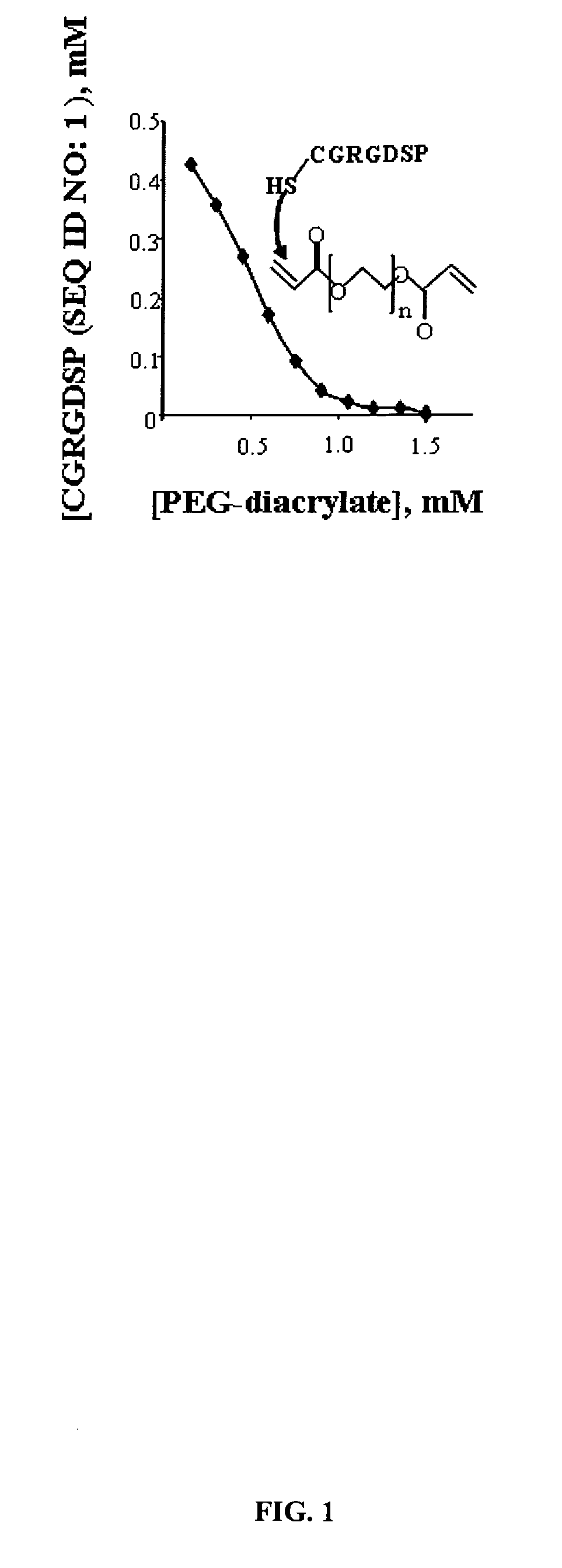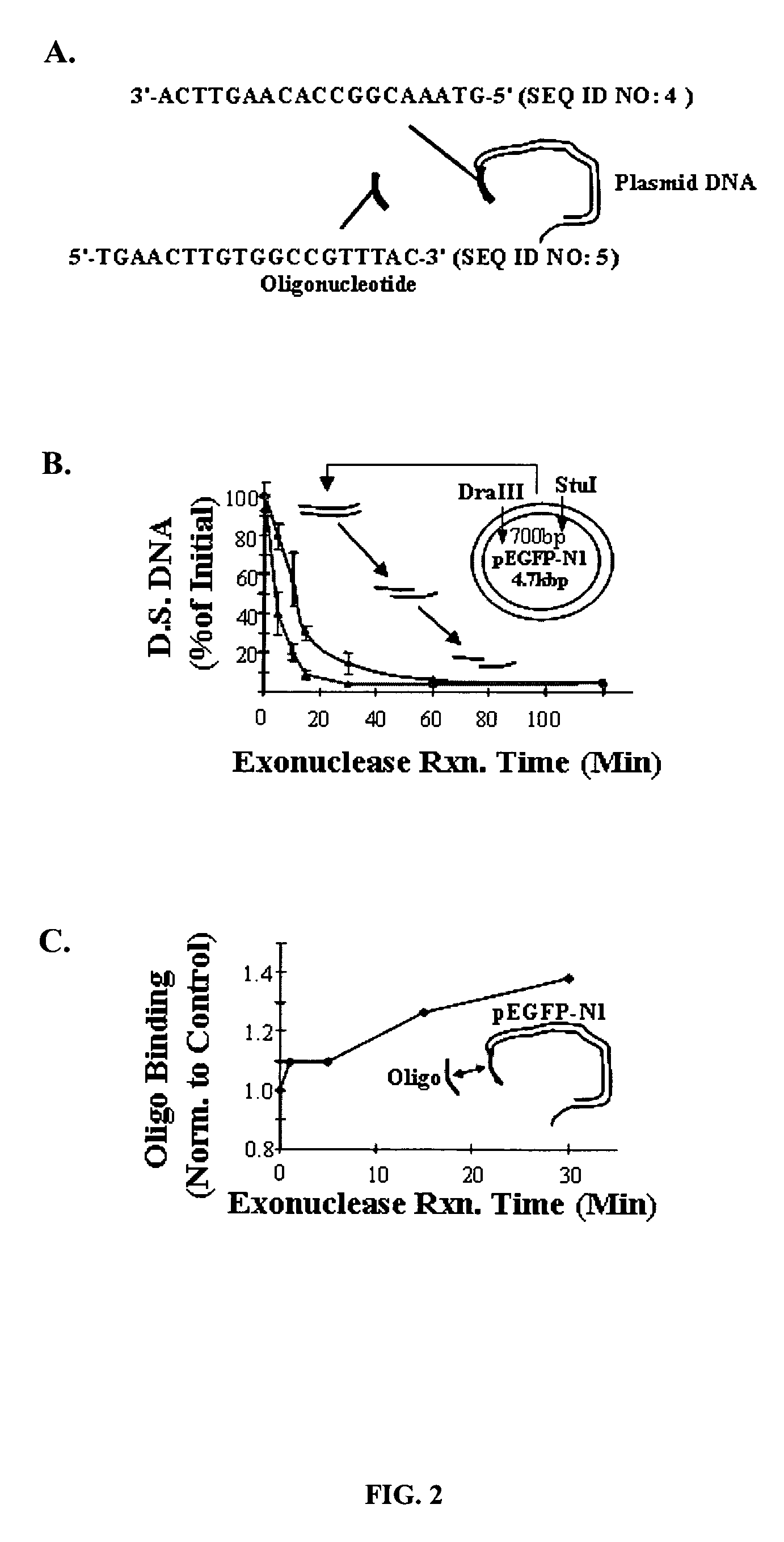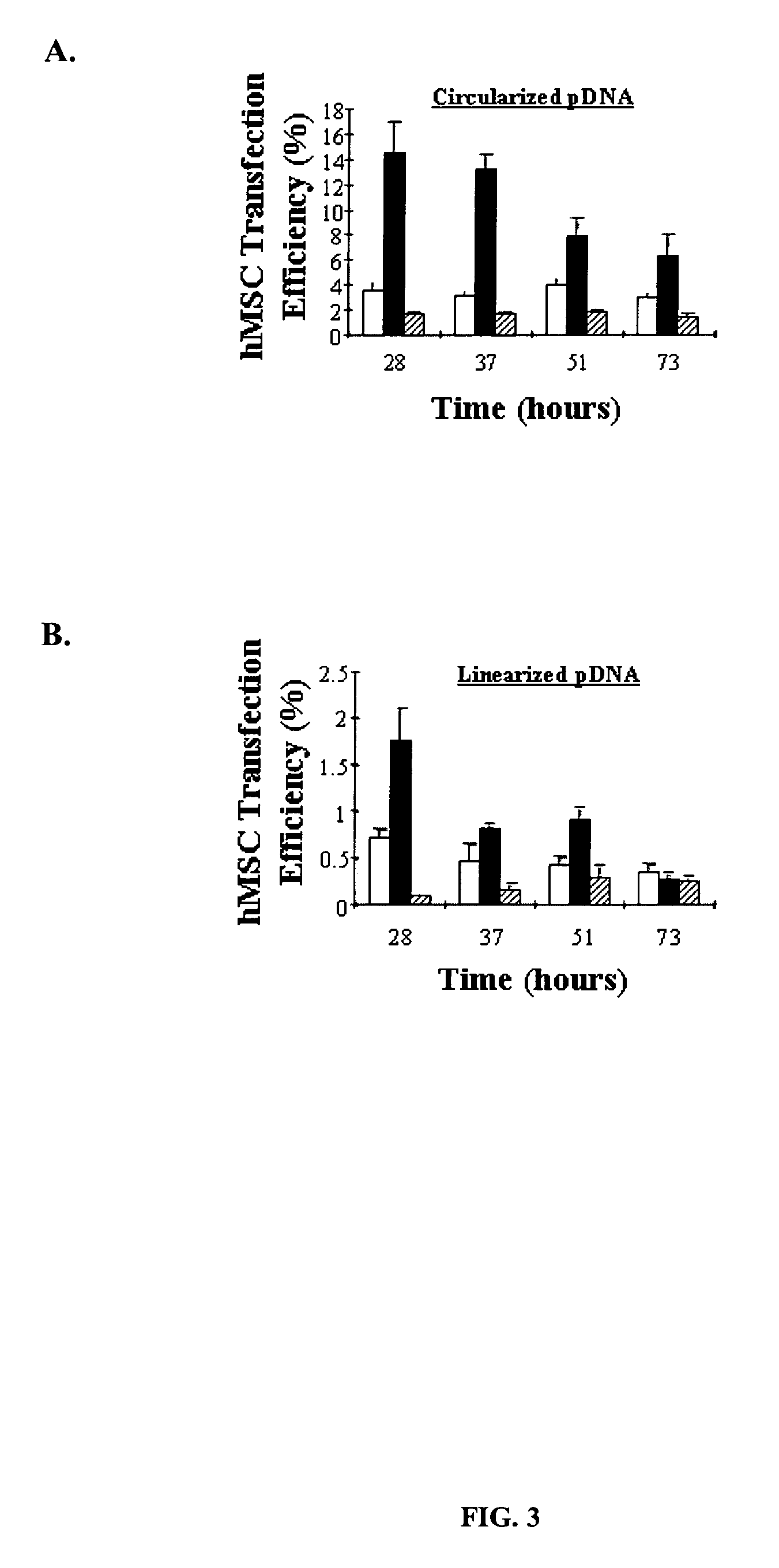Method and system for delivering nucleic acid into a target cell
a nucleic acid molecule and target cell technology, applied in the field of methods and systems for delivering nucleic acid into a target cell, can solve the problems of complicated immobilization of multiple distinct plasmids, limited spatial and/or temporal control of nucleic acid delivery to a desired cell population, and high affinity of plasmid dna for the substrate, so as to improve the efficiency of transfection and improve the strength and specificity of the interaction. , the effect o
- Summary
- Abstract
- Description
- Claims
- Application Information
AI Technical Summary
Benefits of technology
Problems solved by technology
Method used
Image
Examples
example 1
Development of Hydrogels for Cell Interaction
[0029]This example discloses the development and characterization of PEG hydrogels for use in directed cell differentiation. Recent studies in tissue engineering and basic cell biology have focused on controlled presentation of signal to cells in a three-dimensional biomaterial matrix. These matrices are designed to present specific biomolecules on a background that does not interact with cells or proteins and are designed to allow for specific analysis and / or exploitation of a cell-ligand interaction. The substrate concurrently presents a cell adhesion ligand and an oligonucleotide linker for plasmid DNA immobilization to enhance gene uptake. The substrate disclosed herein is a PEG hydrogel that displays covalently attached oligonucleotides on a surface that is inert to interaction with cells and proteins.
[0030]As shown in FIG. 1, PEG chains derivatized with acrylate groups can react with sulfhydryl groups in cysteine-terminated peptides...
example 2
Engineering of Plasmid DNA for Interaction with Oligonucleotide Linker Sequences
[0032]Typical protocols for non-viral transfection of mammalian cells employ plasmid vectors that are double-stranded and circular. Consequently, these plasmids do not contain single-stranded DNA sequences that can be targeted for controlled interaction with an immobilized oligonucleotide. To engineer a plasmid-oligonucleotide linker interaction, modified molecular biology techniques were used to confer a plasmid DNA expression vector with a single-stranded sequence. This sequence was then bound to a complementary oligonucleotide linker via DNA-DNA base pairing.
[0033]As shown in FIG. 2A, the approach first used an endonuclease to linearize a plasmid DNA vector, followed by brief treatment with a lambda exonuclease, which cuts double-stranded DNA in the 5′ to 3′ direction. The exonuclease cleaves only one strand, leaving a short (<50 bases), single-stranded sequence that is capable of interacting with a c...
example 3
Preliminary Transfection of Mesenchymal Stem Cells with Plasmid DNA In Vitro
[0037]This example discloses the transfection of hMSCs with a pEGFP-N1 plasmid (Clontech; Mountain View, Calif.) that was either circular or linearized via DraIII endonuclease cleavage. The plasmid DNA was complexed with three separate types of transfection reagents, each widely used to enhance non-viral transfection efficiency. Transfection efficiency was measure by expression of endothelial green fluorescent protein (EGFP). As shown in FIG. 3A (for circular plasmid DNA) and FIG. 3B (for linear plasmid DNA), these reagents included the following: (1) a synthetic, polycationic polymer (white bars) (JetPEI: Polyplus Transfection; Illkirch, France); (2) a cationic lipid reagent (black bars) (Effectene: Qiagen; Valencia, Calif.); and (3) an activated cationic dendrimer (striped bars) (Superfect: Qiagen). The results demonstrate that hMSCs can be readily transfected in culture. Additionally, the cationic lipid r...
PUM
| Property | Measurement | Unit |
|---|---|---|
| temperatures | aaaaa | aaaaa |
| temperatures | aaaaa | aaaaa |
| diameter | aaaaa | aaaaa |
Abstract
Description
Claims
Application Information
 Login to View More
Login to View More - R&D
- Intellectual Property
- Life Sciences
- Materials
- Tech Scout
- Unparalleled Data Quality
- Higher Quality Content
- 60% Fewer Hallucinations
Browse by: Latest US Patents, China's latest patents, Technical Efficacy Thesaurus, Application Domain, Technology Topic, Popular Technical Reports.
© 2025 PatSnap. All rights reserved.Legal|Privacy policy|Modern Slavery Act Transparency Statement|Sitemap|About US| Contact US: help@patsnap.com



